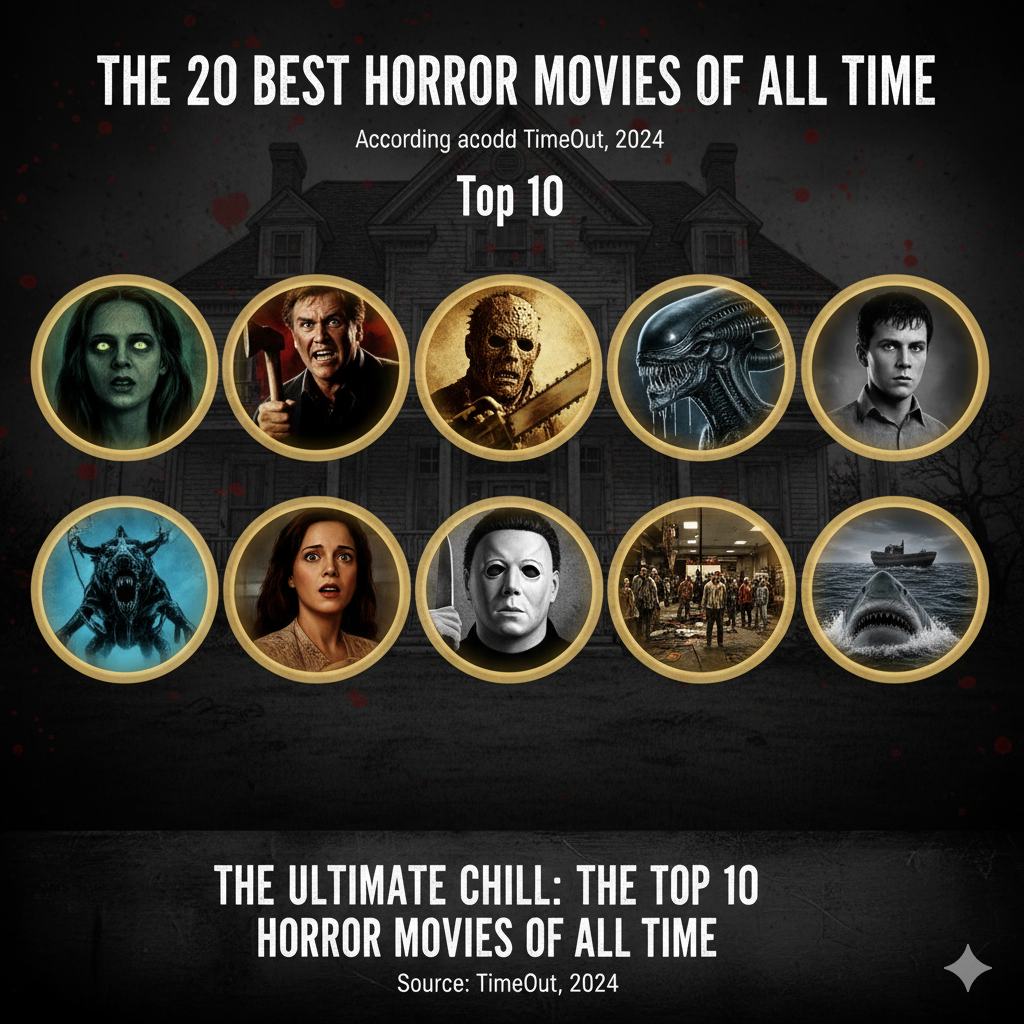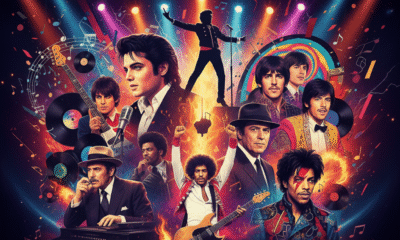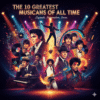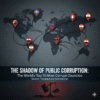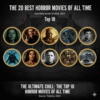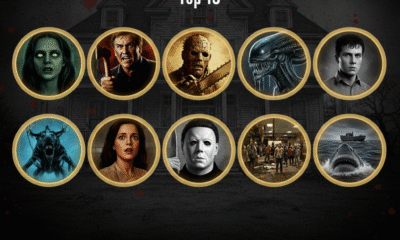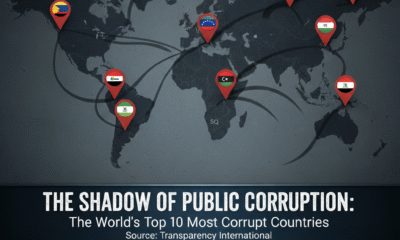Entertainment
Top 10 Horror Movies of All Time
Horror films go beyond simple frights. They use deep psychological terror, groundbreaking special effects, and unforgettable characters to get under your skin.
These movies use demonic possession to form an isolated madness and the sheer brutality of a slasher. They also create a lasting fear and shaping the horror genre for decades to come.
- Top 10 most profitable Nigerian banks in the first half of 2025
- Top US, India Officials Discuss Ties As Trade Rift Drags On
This list presents the ten most terrifying and essential horror movies in cinema history. The ranking comes from a prestigious 2024 list compiled by the film experts at TimeOut.
The list also, explores why each film earned its spot among the all-time greats.
1. The Exorcist (1973)
The Exorcist takes the top spot on this definitive list. This film shocked the world with its story of a young girl possessed by a demon. The movie came out in 1973. Director William Friedkin brought William Peter Blatty’s best-selling novel to the screen. The novel itself was inspired by a real-life exorcism case from 1949.
The development of the film was fraught with challenges. The director had a demanding style, and the set experienced many strange events. This led some to believe the production itself was cursed.
The movie was a massive commercial hit despite mixed initial reviews. It became the first horror film ever nominated for the Best Picture Academy Award.
The movie themes faith, doubt, and the battle between good and evil resonate deeply. The Exorcist remains one of the most unsettling and powerful horror movies ever made.
2. The Shining (1980)
Stanley Kubrick is a deeply psychological horror film. It follows a writer and recovering alcoholic, Jack Torrance, who takes a job as the winter caretaker of the isolated Overlook Hotel. He descends into madness as his family is terrorized by the hotel’s evil history.
The film is an adaptation of Stephen King’s 1977 novel. Kubrick put his unique directorial stamp on the story. He created a haunting mood of paranoia and isolation instead of relying on traditional jump scares. The film was one of the first to use the new Steadicam technology extensively.
Initial reactions to the film were mixed. Stephen King himself criticized the way the movie changed his book. However, the film’s reputation has grown immensely over time.
3. The Texas Chain Saw Massacre (1974)
The Texas Chain Saw Massacre lands at number three. This independent film by director Tobe Hooper introduced audiences to the masked killer, Leatherface, and his cannibalistic family. The raw, documentary-style look of the movie shocked audiences upon its 1974 release.
The movie’s concept came from Tobe Hooper in the early 1970s. He drew inspiration from the graphic violence he saw on the news and the crimes of real-life murderer Ed Gein.
Hooper created the story to reflect the skepticism and disillusionment of the time, following events like Watergate and the Vietnam War. He even used the misinformation that the film was a true story as part of the film’s marketing.
4. Alien (1979)
Alien takes the fourth spot. The movie combines the genres of science fiction and horror. The movie follows the crew of a commercial starship, the Nostromo. They investigate a mysterious signal on a desolate planetoid and become hunted by a deadly extraterrestrial creature, the Xenomorph.
Dan O’Bannon and Ronald Shusett created the original story of the movie. Director Ridley Scott turned it into a deeply atmospheric and terrifying film. A major part of the film’s success came from the disturbing creature design by Swiss artist H. R. Giger. This design helped create one of the most iconic movie monsters ever.
The film was both a critical and financial success after its 1979 release. It won an Academy Award for Best Visual Effects. Critics and audiences have since widely accepted it as one of the greatest and most influential science fiction and horror films of all time.
5. Psycho (1960)
Alfred Hitchcock’s Psycho tells the story of Marion Crane, who goes on the run after stealing money, and her fateful stop at the Bates Motel. She meets the quiet and disturbed motel owner, Norman Bates.
Hitchcock chose to film Psycho in black and white, despite his previous successful suspense films being in color. He felt color might make the film’s bloody scenes too much for the audience to handle.
The film was made on a modest budget, using the crew from Hitchcock’s television show. He carefully kept the plot twists a secret before the release.
The film was an immediate box office hit. Its shocking narrative twists, especially the sudden death of the main character, changed the way filmmakers told stories.
6. The Thing (1982)
John Carpenter’s The Thing holds the sixth position. This 1982 science fiction horror film is based on a 1938 novella. It tells the story of a group of American researchers in Antarctica.
The film faced creative challenges during its development in the mid-1970s. John Carpenter finally took the director’s chair.
A large part of the film’s $15 million budget went into creating the horrifying and groundbreaking creature effects. These effects were a mixture of chemicals, mechanical parts, and food products.
The movie was not a hit when it first came out. It faced tough competition from films that offered a more optimistic view of aliens, like E.T. the Extra-Terrestrial.
However, the film found a massive cult following when it was released on home video. It has since been reappraised as a masterpiece of paranoia, practical effects, and nihilistic horror.
7. Rosemary’s Baby (1968)
Rosemary’s Baby is a psychological horror film that was released in 1968. It tells the story of Rosemary, a newlywed who becomes pregnant. She slowly suspects her peculiar neighbors have a sinister plot involving her unborn child. The movie is based on Ira Levin’s 1967 novel.
Producer Robert Evans recognized the book’s commercial potential and secured the film rights. He hired director Roman Polanski, who was already admired for his European films.
The movie was a huge box office success and received immense critical acclaim upon release. It deals with deep themes like paranoia, loss of control, and the occult. The film’s tension comes from its subtle build-up of dread, making the final revelation all the more terrifying.
Rosemary’s Baby is widely regarded as one of the greatest horror films of all time and was chosen for preservation in the National Film Registry.
8. Halloween (1978)
John Carpenter’s Halloween is at number eight. This 1978 movie introduced the iconic slasher Michael Myers. The film focuses on a psychotic killer who stalks babysitters in a quiet American suburb on Halloween night. It is one of the most influential low-budget films ever made.
Producer Irwin Yablans came up with the film’s premise. He wanted to make a movie with the same impact as The Exorcist. Carpenter agreed to direct, write, and score the film, asking for full creative control.
The film was made on a very small budget and the simplicity of the story and the look of the killer made it incredibly effective. The mask for Michael Myers was famously a cheap Captain Kirk mask, painted white.
The movie’s low budget forced the creative team to innovate. They used the newly available Steadicam to create Michael’s point-of-view shots, putting the audience directly into the killer’s perspective.
Halloween changed the horror landscape. It popularized the slasher subgenre and proved that a low-budget independent film could achieve massive commercial success.
9. Dawn of the Dead (1978)
George A. Romero’s Dawn of the Dead holds the ninth spot. This 1978 film is the second movie in Romero’s legendary Dead series. It follows a group of survivors who take refuge in a large shopping mall during an escalating zombie epidemic.
The idea for the film came to Romero after a friend invited him to visit the Monroeville Mall. The friend jokingly suggested that someone could survive there during an emergency. This inspired Romero to write a screenplay that mixed zombie action with a critique of consumerism.
The film successfully uses the zombie apocalypse as a vehicle for social satire. The sight of the undead mindlessly wandering the aisles of a shopping mall became an iconic image.
Dawn of the Dead is a hugely influential film for it cemented the modern image of the zombie as a shambling, flesh-eating corpse and further established the horror genre’s ability to offer deep commentary on society.
10. Jaws (1975)
Closing out the top ten is Steven Spielberg’s 1975 classic, Jaws. This suspense-filled thriller tells the story of a small-town police chief, a marine biologist, and a grizzled shark hunter. They hunt a massive, man-eating great white shark terrorizing a New England beach community.
The movie is based on the best-selling novel by Peter Benchley. The film’s production was famously difficult. The mechanical shark, nicknamed “Bruce,” constantly malfunctioned in the ocean water. These technical failures forced director Steven Spielberg to change his approach and chose to show the shark less often.
This challenge proved to be a stroke of genius. The film relies on John Williams’ iconic, haunting musical score and the shark’s terrifying point-of-view shots to build suspense. This less is more approach tapped into the primal fear of the unseen.
Jaws was a commercial phenomenon. It was the first film to gross over $100 million. It completely transformed Hollywood’s marketing and release strategies, creating the modern summer blockbuster model.

